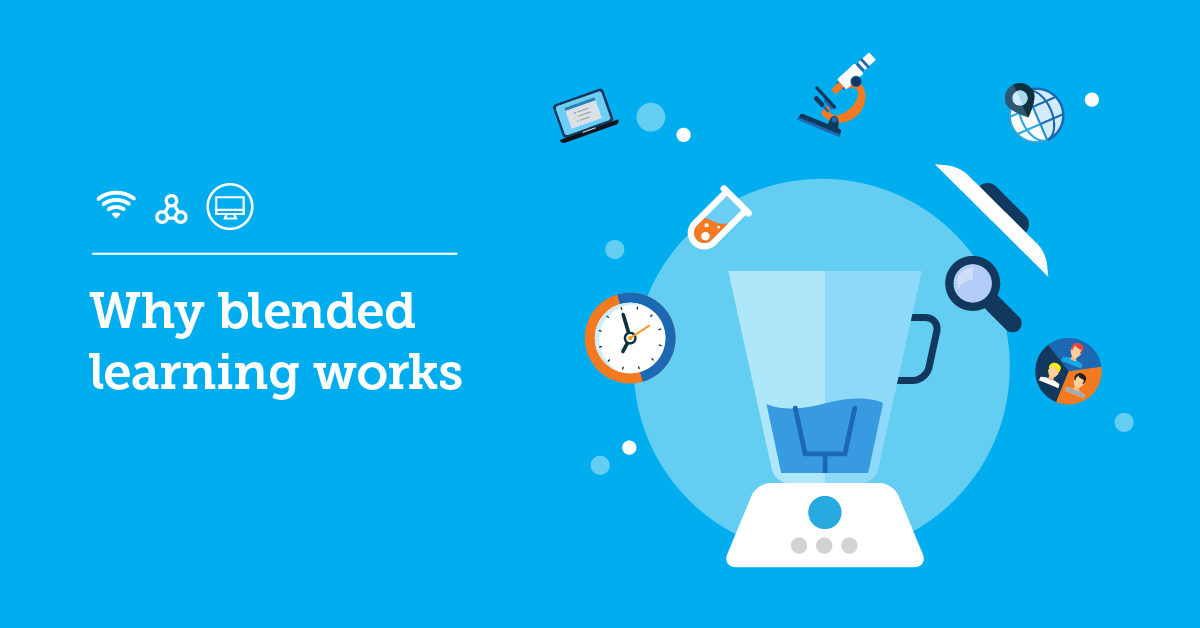
Blended Learning is a topic I love to discuss; partly because it is like talking about the land of opportunity, but also because I can almost never be wrong. See, the thing about new ideas is that in a field in which you don’t have standards set in stone, new ideas – even when completely out of scope, have an ability to inspire new features, improvements, or lead to better ideas.
I can’t be wrong; and you can’t either, so let us know how the ideas explained below have been or will become a part of your planning process toward establishing a blended approach to education.
Today I want to look at the value of actions you can perform when planning and executing blended learning in a new environment.
Let’s look at the tips I felt were most important when deciding to make the shift to a blended learning approach.
1) Don’t rush! Education is a journey.
The debate around the implementation of blended learning practices in schools (not mentioning Universities because most are using blended learning in most classes, even just to disseminate course documents) is heavily structured around the lack of experience. We agree. We don’t have enough data to have solid answers when it comes to “Will it work in the long run?”. Even though the evidence for schools doesn’t exist in overwhelming numbers, we still have MOOCs (Massive Open Online Courses) and Universities, as well as some of the braver districts that have implemented blended learning in K-12. There is absolutely no reason to rush into the “desired” results. Let’s reflect on every successful idea or business ever:
- None of it happened overnight.
- Success is not something which is defined in the early stages of any venture.
- The team is the most essential component in the implementation of any project (Teachers, students, parents, officials)
2) Break down the barriers.
Although blended learning is not a new concept, it is still an untapped niche; what I mean by that is that there are not many who take advantage of it, thus leaving the space open for brainstorming and fresh ideas. Let’s look at a few hot reasons why blended learning is still a rarely taken route down education lane.
– Lack of time: You either have a child, are an educator, or have an idea of what the educational system is like. In the last decade we’ve been showered with education reforms and curricula changes, whether you reside in the United States, the UK or any part of the world, changes have taken place on a global scale. Has that improved the year-end results on a global scale as well, though? Not in a revolutionary scale. The thing about change is that it takes a considerable amount of time for everyone to adjust, and governments are never too happy with adjustment periods. When discussing real and tangible reforms in the educational system, we need to consider a few factors:
- Time
- Finances
- Information Technology Resources (eg. an LMS that will support blended learning features)
- Staffing
Lay the groundwork
Plan to Succeed
I will go ahead and discuss a few points that I find are essential in the planning process. The planning process is the process during which you want to put on paper all the reasons why people should support and fund this project. It’s the process through which you communicate your purpose and goals.
1. Clearly communicating goals: Business Strategy is not something carried out by corporate moguls only, it’s what every conscientious business owner should draw up before taking up a venture. To be able to move to step number two, which is all about executing the plan and attracting supporters and funds to the cause, you need to clearly communicate the cause to your prospective supporters. From alternative courses of action (e.g. Computers VS tablets, the whys & hows), to the alternative sources of funding you have drawn up and expect to bring in, to the intangible (social, economic and educational) outcomes that are to be expected from this shift.
2. Turn teachers into leaders: Blended learning is the mixing of different learning methods to find the ideal formula between all the possible alternatives. The great thing about mixing things up is that each and every one of us can come up with situationally ideal scenarios that will work better depending on the setup, demographic and school. By allowing teachers to create and adapt their curricula to the students, not only do you allow them direct engagement in the creation of the content, but you leave the field open for them to use any resource available on the internet to do so (Consider this: The Apple App Store houses more than 40,000 educational applications for computers and tablets – the possibilities are endless). This is a particularly good idea in the cases that teachers are hesitant to “bring change into the classroom” where their model already “works”; it is not about fixing what doesn’t work, it’s about improving a model with the assistance of technological advancements.
You need to plan, and then you need to find people that will hear you out, so let’s look at the two factors that play the biggest role in the realization of such a project:
Committed Supporters
It’s sadly not as easy as saying “I’ll put a smart-blackboard here, and a projector here, connect it all to a network and we’re done”. No. Governments have gruelling procedures to go through, called bureaucracy. Sadly, due to that, and the fact that most ministers and senators will firstly look at the face value of a project, instead of the projected intangible value of improving education, projects like that are more often than not, declined.
Suggesting that government officials are more perspicacious and embrace technological advancements in education is a utopian idea; in order to properly advocate for the improvement of the means through which education is channeled there are other people who need to do the advocating first. School Boards, administrative staff, teachers along with parents all need to advocate to their district so these things can happen. When people try things in groups, it’s much more likely to be heard, rather than when very few call for change.
In some forms, blended Learning – as mentioned earlier, is already practiced in schools, usually in the form of “Laboratory work” to complement the theory done in class, or suggested reading material online, this is undeniably a form of blended learning which doesn’t need all of the infrastructure to be in place. To enhance the power of advocacy, piloting a method of blended learning would also be a great idea toward presenting a strategically solid plan, which any official would be more inclined to implement, rather than a well-thought but never practiced plan.
Funding
Coming up with and managing finances related to such a large project is a complex task, no doubt. Here are five tips to develop the budget in order to implement the ideal 1-for-1 ratio of computers per student.
1. Leasing: Leasing is usually more affordable than buying, especially in the case of high-turnover products like computers. This is not a golden rule, but to bring school-wide change faster, leasing might help you get one step ahead, since spending money to buy and setup a whole network of hundreds of computers for a single school can be financially disruptive to other activities.
2. Offer Online Material: Slowly and progressively, try to start offering course documents or select-material online and using print-outs of publicly distributed online material. This will decrease expenses incurred by the school to supply books, and it will diversify the knowledge and the resources learners use.
3. Weed out the bad: Even the schools that don’t offer blended learning (or a form of it) use computer for some kind of introductory computer course. Those computers are usually filled with software that is both expensive and largely unnecessary. Look at what you already have, and discontinue any subscriptions to vendors that only create red markings on your budget report.
4. Fly like a pilot, don’t crash into the destination: Pilot! Smooth into the transition, don’t rush into getting everything implemented at once – this will most likely ruin more things than you would have achieved if you took steps little by little ensuring success in each.
5. (Private Institutions) Avoid long-term borrowing: As highlighted, if you are a private school/institution, you probably have the ability to issue debt in the form of Bonds (long or short term). Usually, the better yielding (higher returns) are offered when issuing long-term bonds (10-15-30 years). Committing to the project is good, yet committing with such a long-term promise to be paying bond coupons for up to 30 years is borderline extreme if the feasibility and effectiveness of the plan is not guaranteed.
In later articles we will be diving into the details of applying blended learning in the K-12 and other divisions.
Let us know if you were the first to bring such a change to a school or establishment. What were the barriers you had to take down? Was planning the process an easy or gruelling task? Did you blend the standard education model with an LMS or other resources, and how did that work in the beginning, versus later on? Was getting people interested and engaged hard, considering the knowledge gap between different people?
| Tags: Blended Learning


Leave a Reply